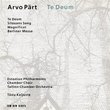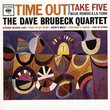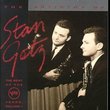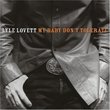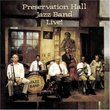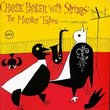| All Artists: Charlie Parker, Dizzy Gillespie Title: Bird & Diz Members Wishing: 2 Total Copies: 0 Label: Polygram Records Release Date: 7/29/1997 Album Type: Extra tracks, Original recording reissued, Original recording remastered Genres: Jazz, Pop Style: Bebop Number of Discs: 1 SwapaCD Credits: 1 UPCs: 731452143624, 0731452143624 |
Search - Charlie Parker, Dizzy Gillespie :: Bird & Diz
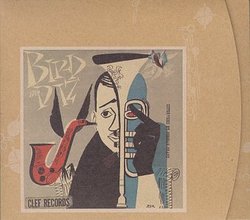 | Charlie Parker, Dizzy Gillespie Bird & Diz Genres: Jazz, Pop
This date from June 6, 1950, was an unusual one for Charlie Parker. He chose to play with fellow bop creators Dizzy Gillespie and Thelonious Monk, in a striking reunion with the trumpeter and the only occasion on which Par... more » |
Larger Image |
CD DetailsSynopsis
Amazon.com essential recording This date from June 6, 1950, was an unusual one for Charlie Parker. He chose to play with fellow bop creators Dizzy Gillespie and Thelonious Monk, in a striking reunion with the trumpeter and the only occasion on which Parker recorded with the pianist. Though the three may have felt encumbered by the presence of swing drummer Buddy Rich, they're in brilliant form, with Parker and Gillespie spurring one another to heights that range from the warm to the electric. Bird's ideas flow with characteristic ease and swing while Gillespie sparks and flares. It's unlikely that anyone else but Gillespie could match Parker on the dazzling interplay of "Leap Frog," a performance supplemented by several alternate takes. Monk's characteristically skewed solos are a rare delight in what is otherwise an orthodox bop setting. The tunes are all Parker's except for "My Melancholy Baby," which inspires witty play. --Stuart Broomer Similarly Requested CDs
|
CD ReviewsBird, Diz, and Monk en-Riched Samuel Chell | Kenosha,, WI United States | 10/30/2004 (5 out of 5 stars) "The retail price for this single-disc album will no doubt seem steep to some consumers, especially since the entire program clocks in at under 45 minutes. But it's a well-produced, artfully packaged (though the "retro-cardboard" fold-over case raises questions about durability), and unique session by three of jazz' most blessed improvisors at the pinnacle of their powers. Originally a 1950 recording released on a 10" LP in 1952, the session was apparently conceived by Norman Granz as an opportunity to win for Bird a larger audience by showcasing him in the company of jazz stars playing "pretty tunes written by good songwriters" (in several years Sonny Stitt would be laying down 5-6 tracks per side of exquisitely played standard tunes for Roost Records). But with the exception of "Melancholy Baby" these are exactly the same kinds of bebop head charts based on blues and "Rhythm" chord changes that Bird had recorded at Dial and Savoy. What distinguishes the album--apart from the singularly aggressive and competitive playing of Parker and Gillespie in their last studio session--is the presence of Monk (playing Bud Powell-like lines on uncharacteristically up-tempo tunes but still unmistakably Monk) and Buddy Rich. In his generous, well-documented liner notes, James Patrick laments the neglect this session has received from previous critics and historians. Then he observes that though Parker, Gillespie, Monk, and (even) bassist Curley Russell "play beautifully," Buddy Rich is "intrusive" and should have been replaced by a Max Roach, Roy Haynes, or Kenny Clarke. Fine, then we have another recording indistinguishable from the earlier Dials and Savoys! Rich may be less flowing and propulsive than the aforementioned bebop drummers, but he's definitely not intrusive. In fact, his swing-era symmetry and unfailing metronomic pulse bring a different dimension to the music and complement, above all, Monk's rhythmic approach. It's impossible to believe a musician like Monk would have hung around the studio if he did not appreciate Rich's time. (In the early '70's at Chicago's Plugged Nickel I saw Monk fire a drummer in the middle of the second tune of the first set!) What I love about this recording are the eleven takes of "Leap Frog." Even though seven are false starts, Bird and Diz are going after one another like rival gladiators on each take. In fact, it's quite a challenge to determine what caused Bird to abort seven of the attempts so quickly (and he clearly is in charge, stopping the recording and giving orders to Monk and the other musicians). The recording provides a fascinating glimpse of the creative process as practiced by one of the indisputable musical geniuses of the 20th century." Great tunes, but don't be mohawked or melancholy bb by price BuzzAdvert | Milwaukee | 01/11/2000 (4 out of 5 stars) "I have nothing to add to the below reviews--except for one significant thing they forgot to clarify. You buy this disc for the first six tracks. Those six add up to only 19 minutes of music. I consider that to be more like an EP, which a buyer should be-aware of. Do like me and buy it used." Bop masters getting together BuzzAdvert | 12/29/1998 (4 out of 5 stars) "Though the title credits Charlie Parker and Dizzy Gillespie, bop pioneer Thelonious Monk is also on this date, bringing three bop masters together. Add drummer Budy Rich who, though out of his natural element, plays exceedingly well, and you have a cooking set of bop tunes. The only problem I have with this CD reissue is the extensive number of false starts tacked on to the end of the disc. Though jazz hounds might find this fascinating, they take away from the magical music that preceeded them. My advice is to stop your disc player after track 13, or better still, seek out the original CD which contained only the first 13 tracks."
|

 Track Listings (16) - Disc #1
Track Listings (16) - Disc #1

